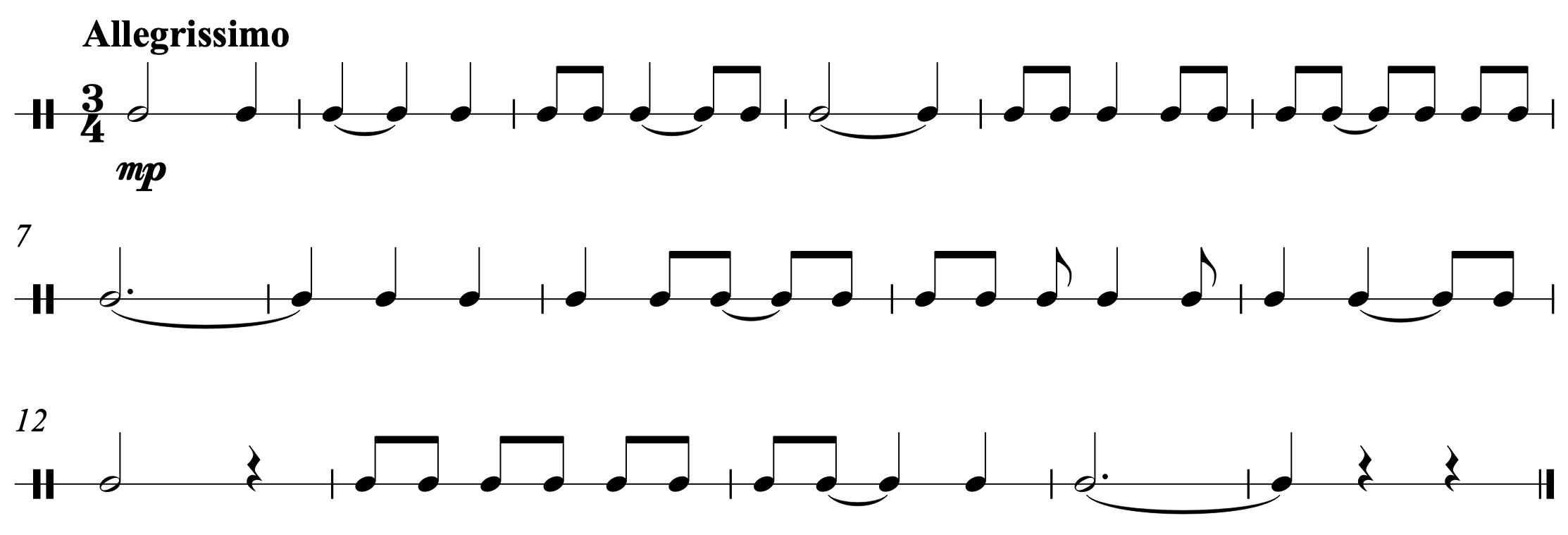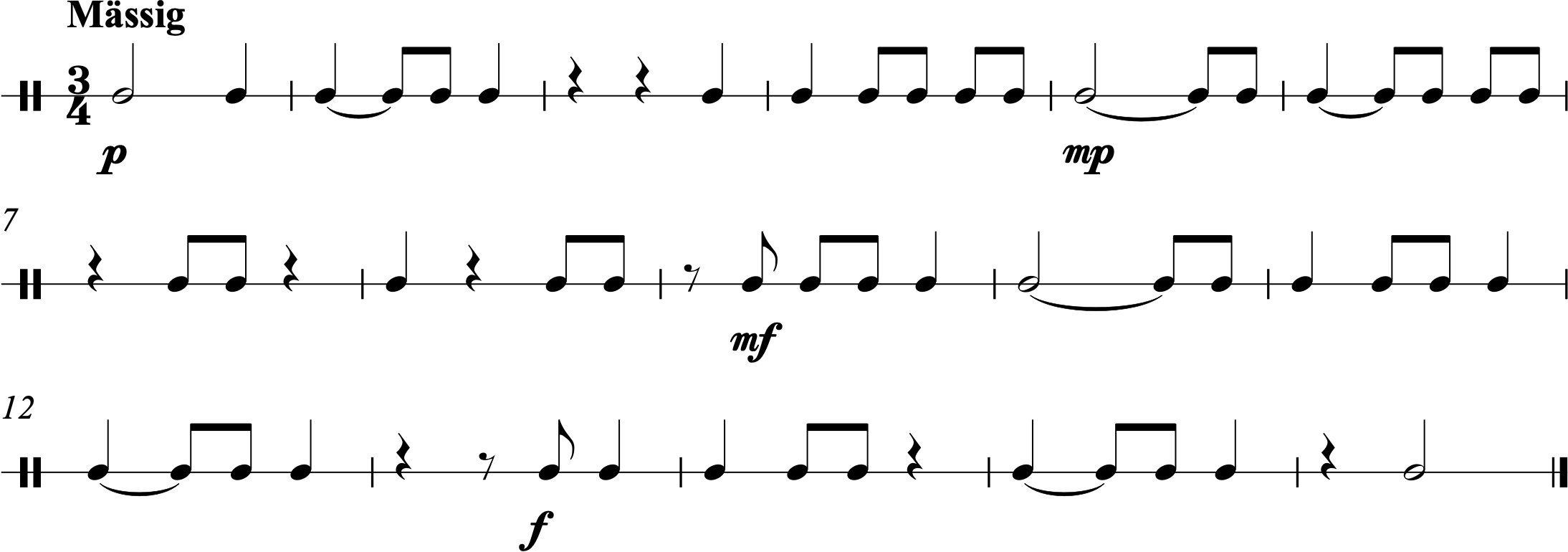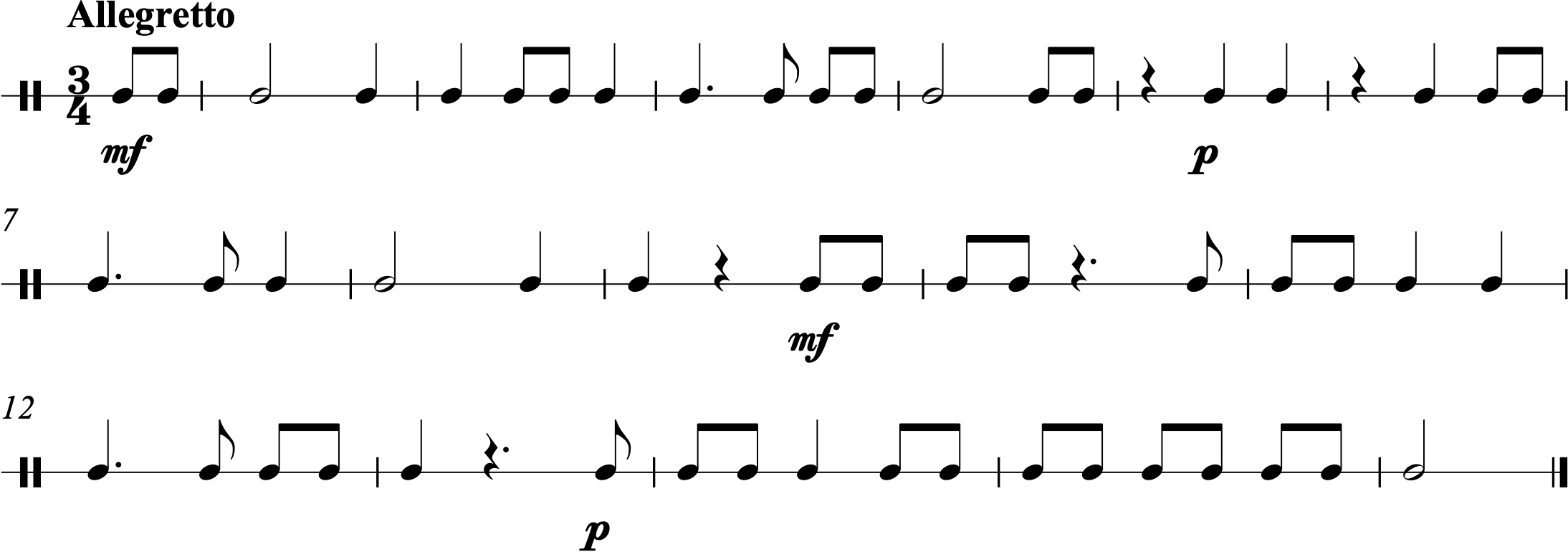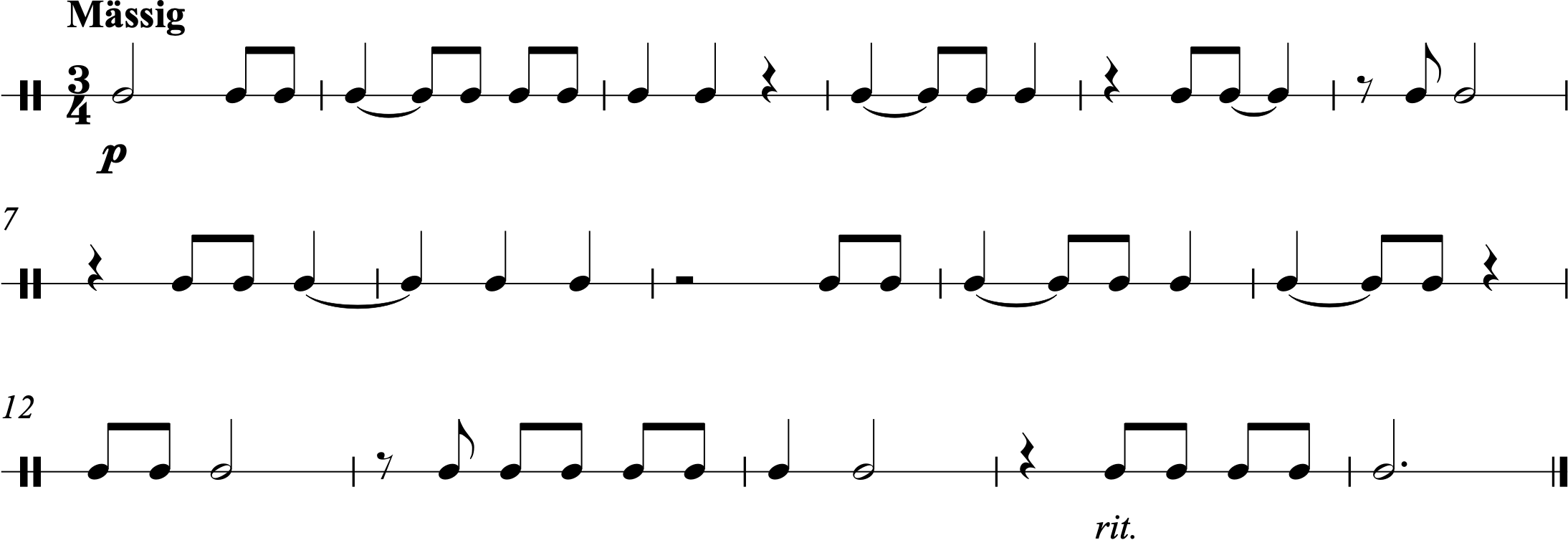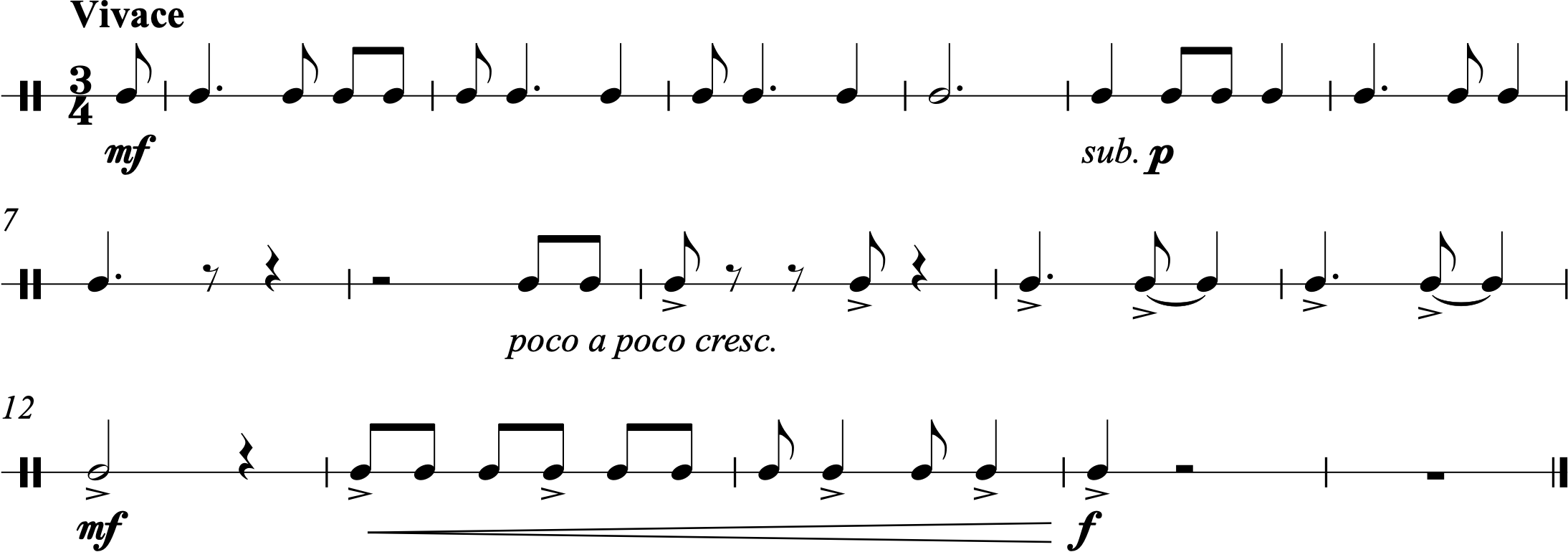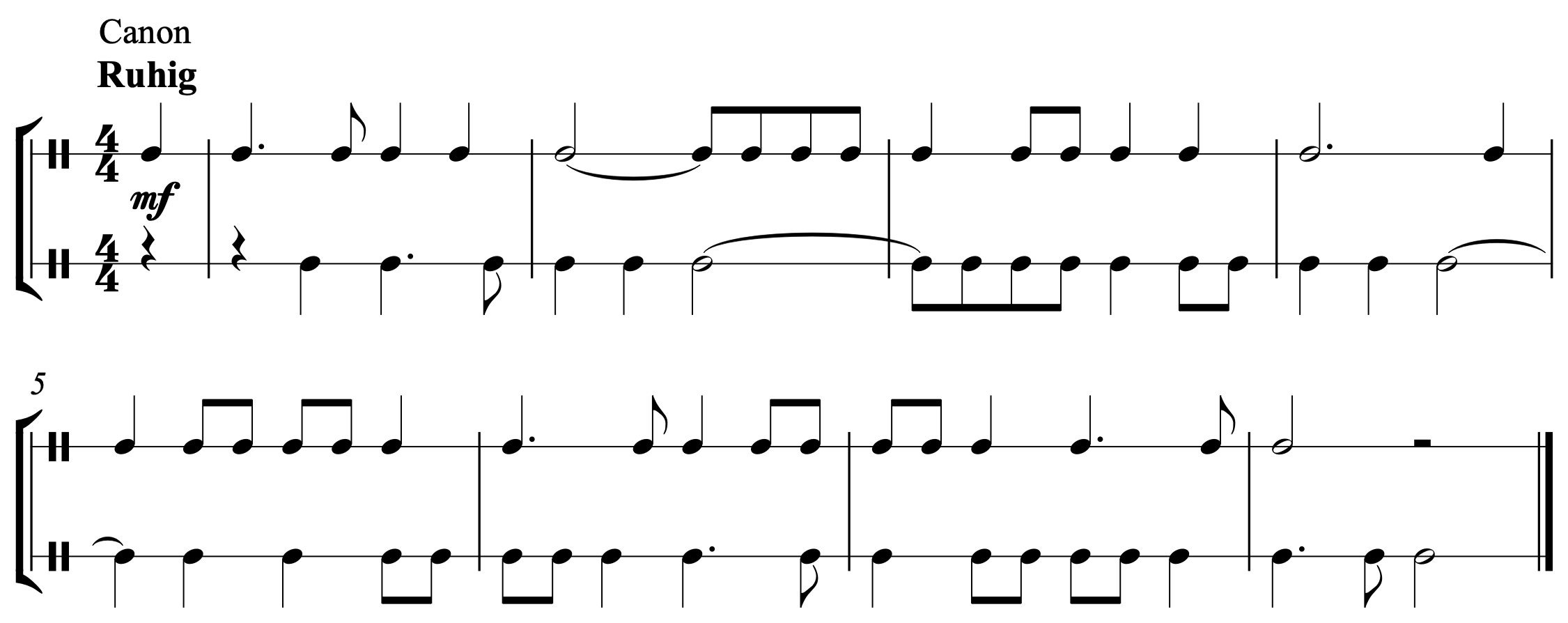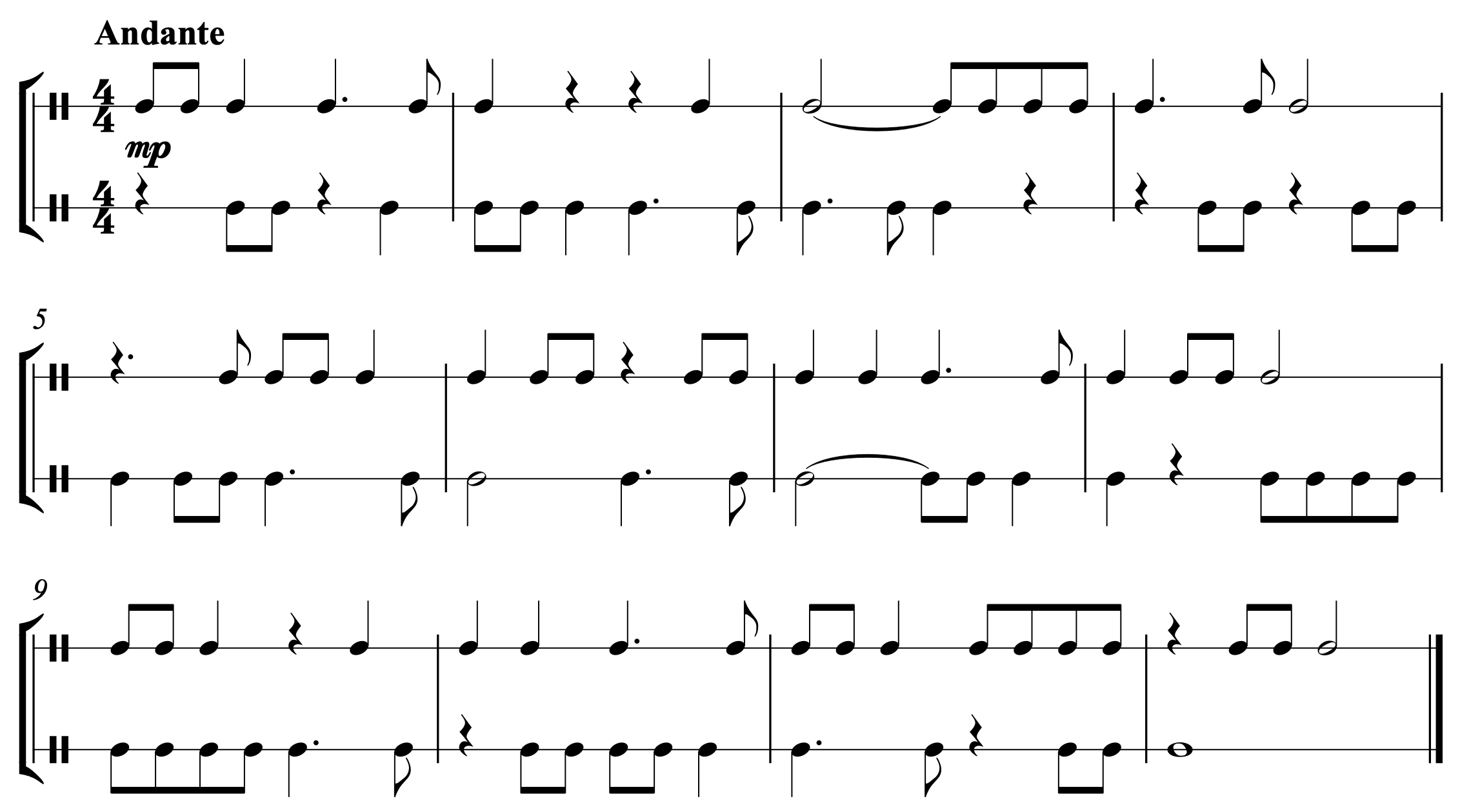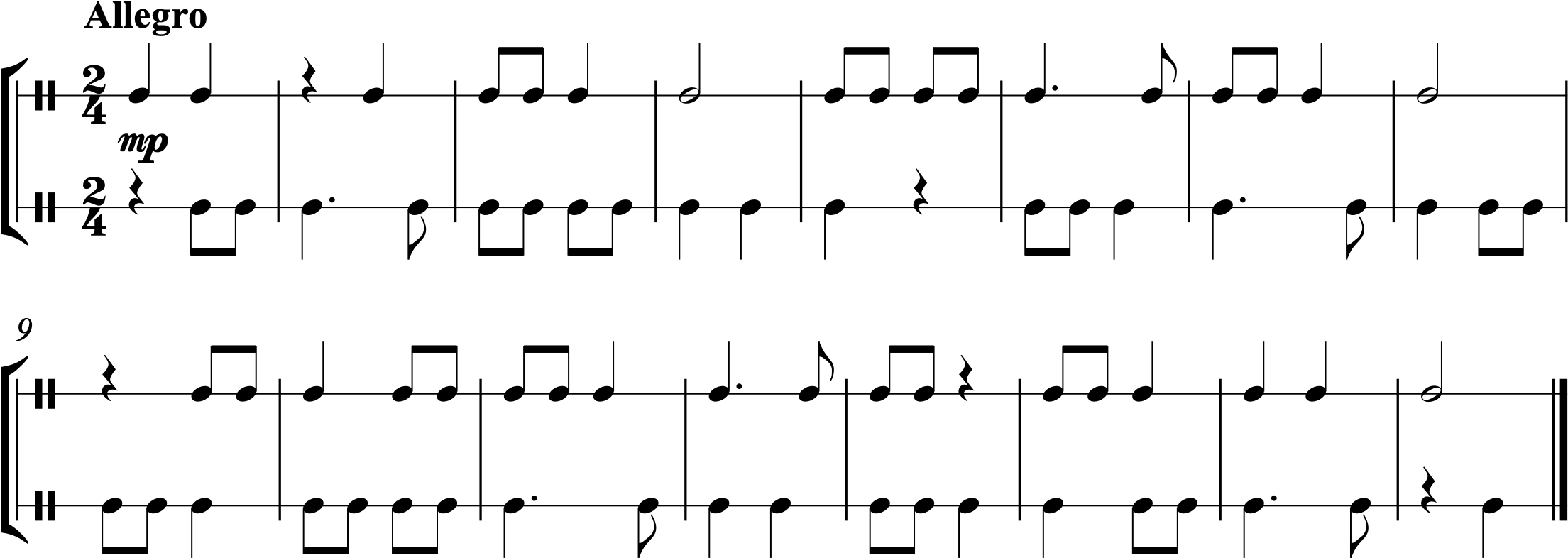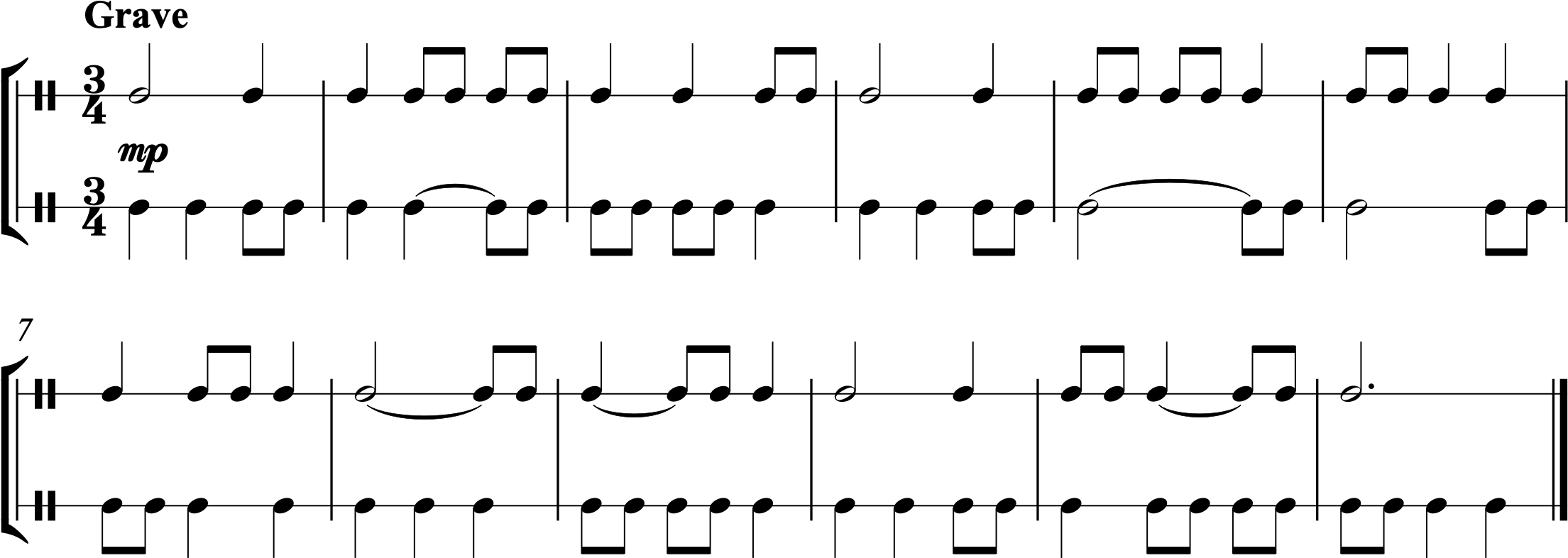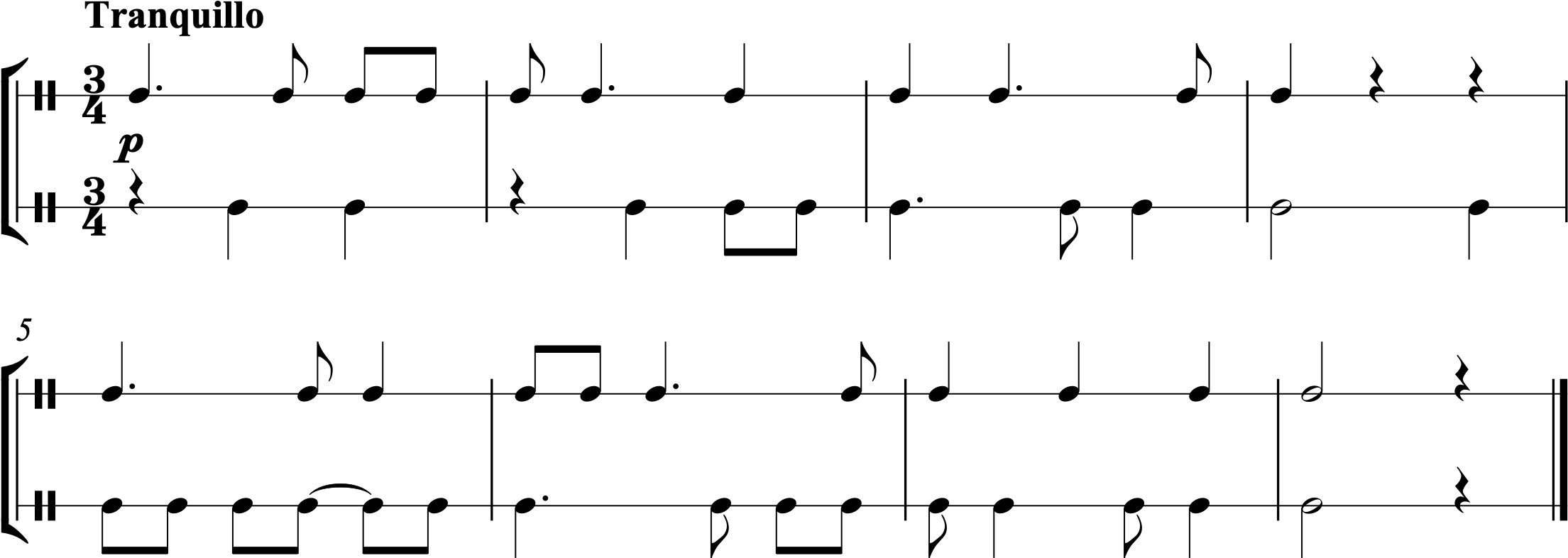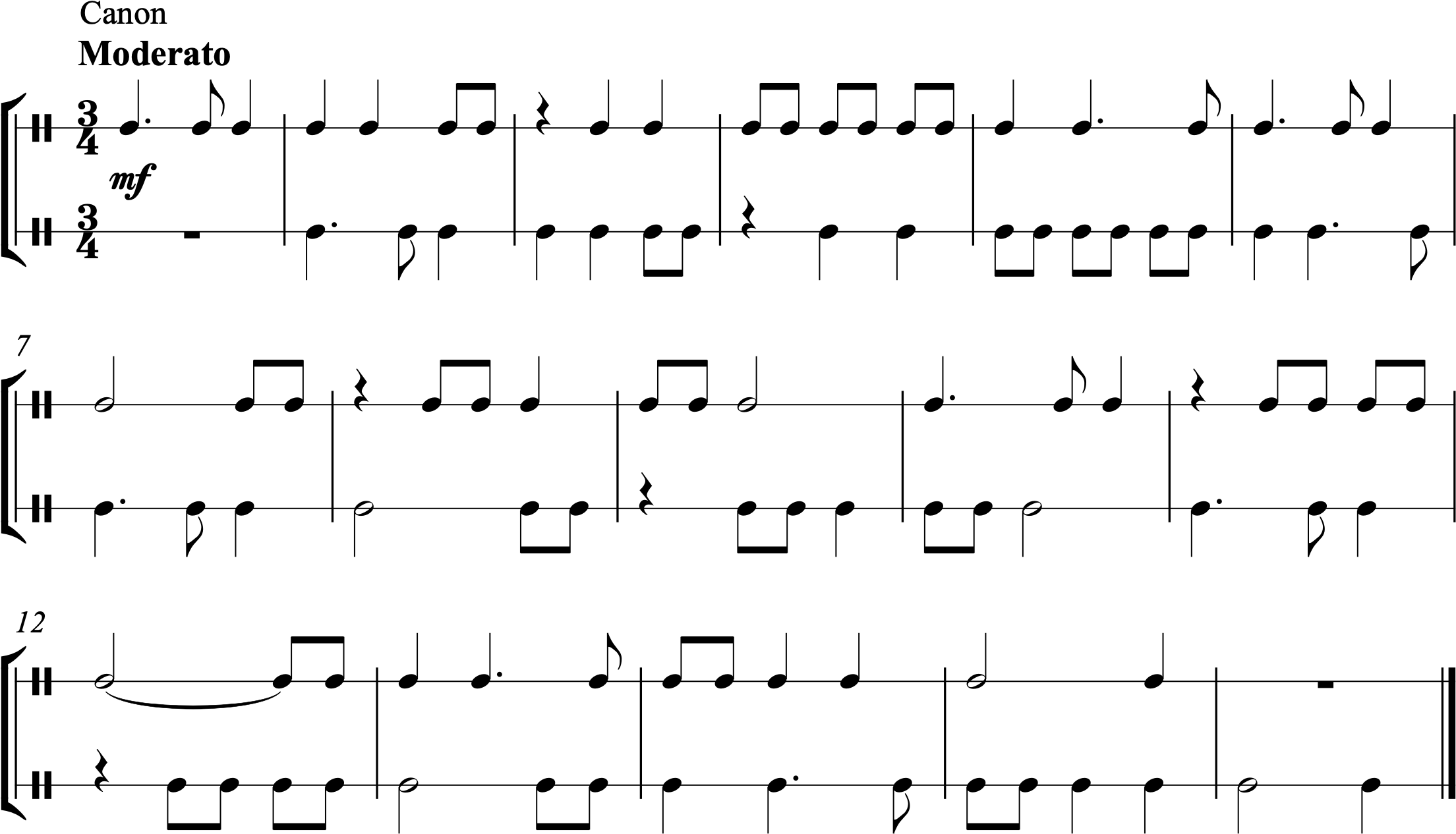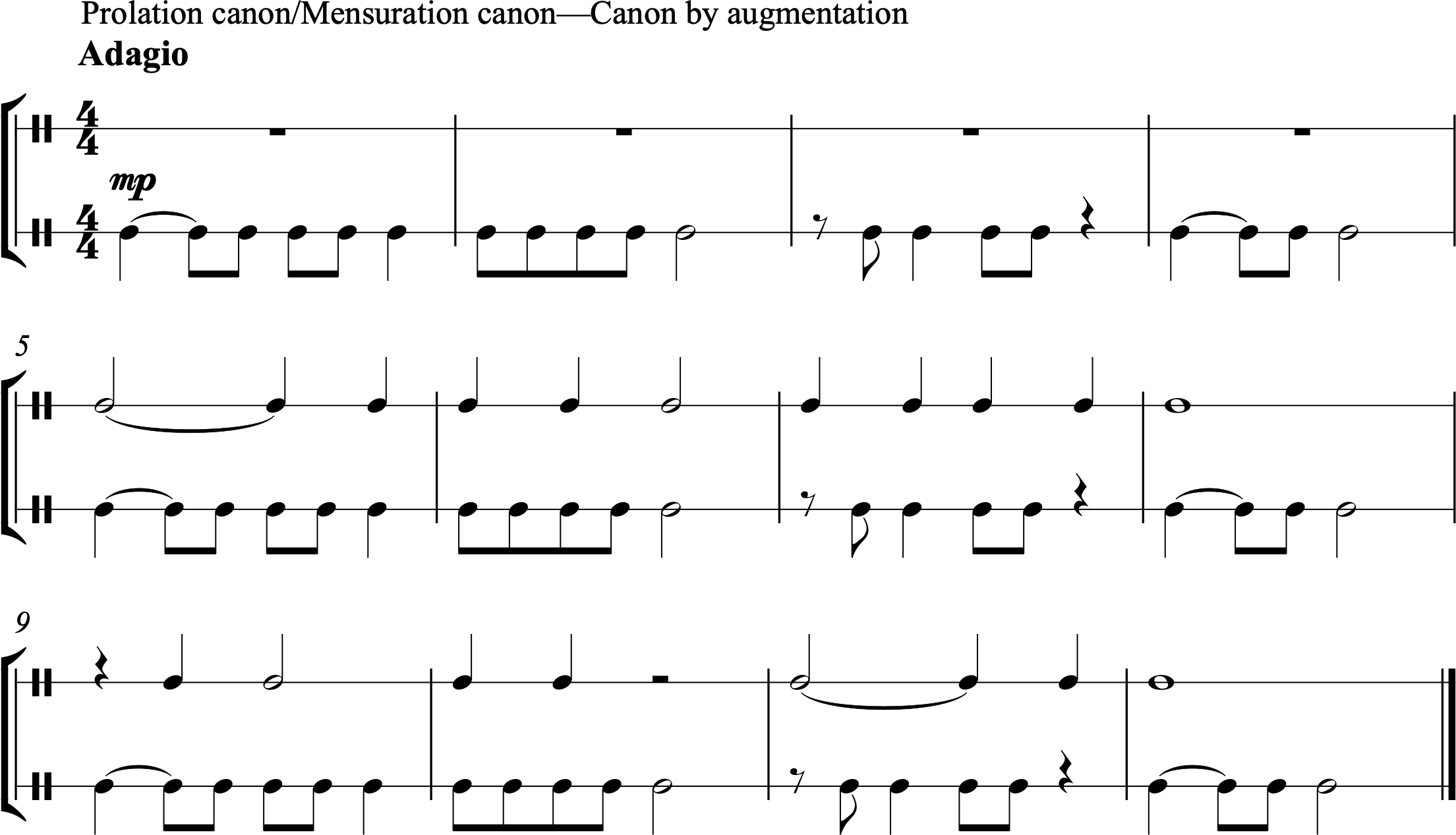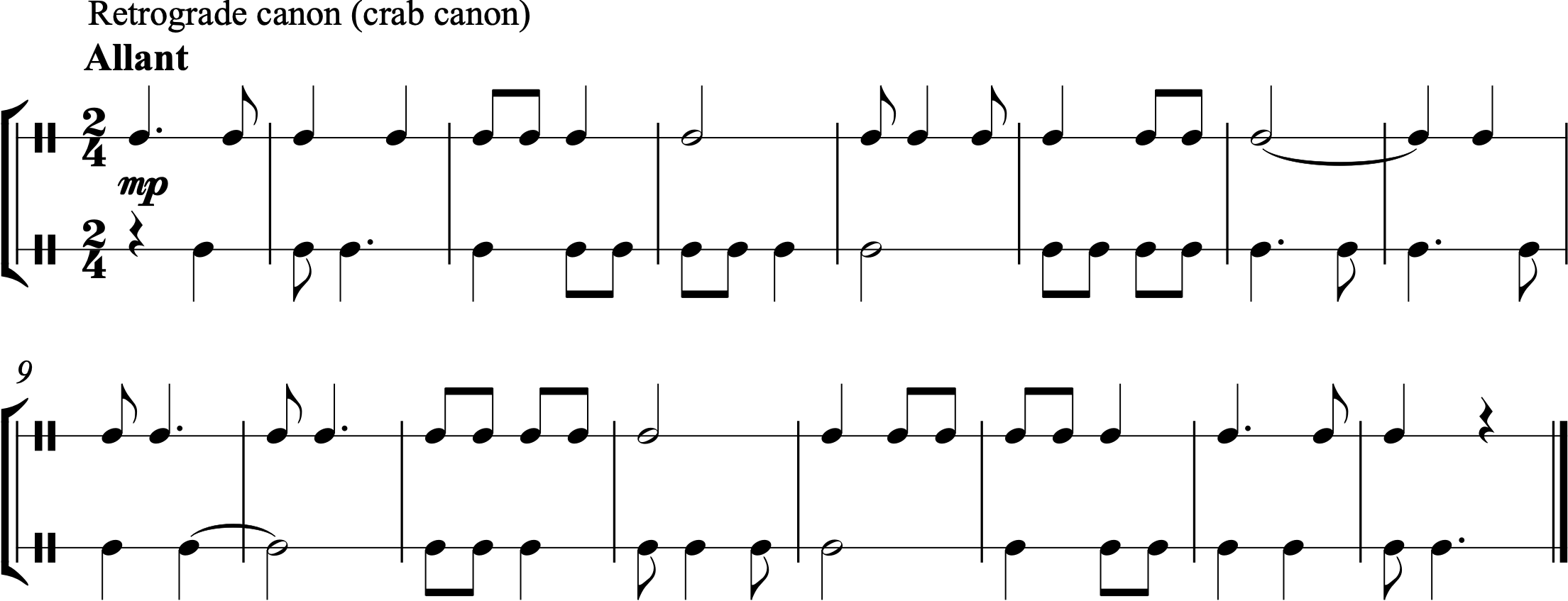Chapter 3: Simple Meter—ties and dotted quarter notes
About This Chapter
About This Chapter: In this chapter, we’ll return to simple meter, but with some new rhythmic elements—ties and dots.
A tie is a curved line that connects two noteheads.* By connecting the noteheads, it combines their rhythmic values. So in measure 2 of the example below, the quarter note on beat 1 of the measure and the eighth note on beat 2 are combined, which means that we should sustain the rhythmic syllable “1” for the duration of one quarter note plus one eighth note.
We’ve already seen dotted half notes in Chapter 1. Remember that a dotted half note has the value of one half note plushalf of that value (a quarter note). In this chapter, we’ll begin to see dotted quarter notes as well. The dot indicates to add half the value of the note, so in the case of a dotted quarter note, we need to sustain for one quarter note plus half of that value (an eighth note). In the above example, you might notice that measures 2 and 3 sound identical despite being notated in different ways (with ties in measure 2 and with dots in measure 3).
*Not to be confused with a slur, which is also a curved line, but is used to indicate legato articulation or phrasing. How can you tell them apart? A tie can only be used on successive notes that are the same pitch. A slur, on the other hand, can be used on notes that are not the same pitch. Slurs also often cover longer spans of music.
Section A—Ties
Practice
Practice A:
Practice by performing along with this audio file, which features a metronome click and the notated rhythm. You will hear one measure of wood block to establish the tempo before the exercise begins.
Next, try performing along with this audio file, which features the notated rhythm but no metronome click. You will hear one measure of wood block to establish the tempo before the exercise begins.
1.
2.
3.
4.
5.
6.
Section B—Dotted quarter notes
Practice
Practice B:
 Practice by performing along with this audio file, which features a metronome click and the notated rhythm. You will hear one measure of wood block to establish the tempo before the exercise begins.
Practice by performing along with this audio file, which features a metronome click and the notated rhythm. You will hear one measure of wood block to establish the tempo before the exercise begins.
Next, try performing along with this audio file, which features the notated rhythm but no metronome click. You will hear one measure of wood block to establish the tempo before the exercise begins.
7.
8.
9.
10.
11.
12.
Section C—More ties and dotted quarter notes
13.
14.
15.
16.
17.
18.
19.
20.
21.
22.
23.
24.
25.
Section D—Two-part rhythms featuring ties and dotted quarter notes
Practice
26.
27.
28.
29.
30.
31.
32.
33.
34.
35.
36.


